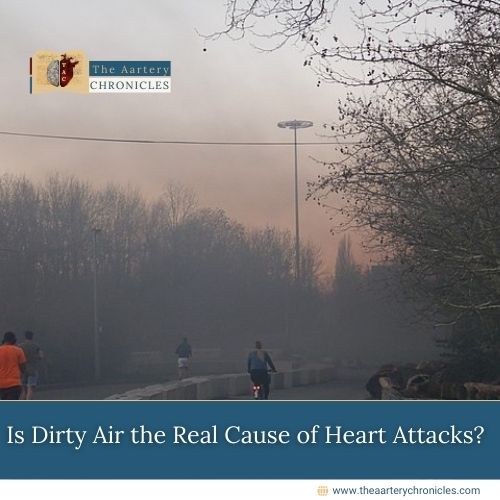

Is Dirty Air the Real Cause of Heart Attacks?
Air pollution isn’t just a problem for our lungs; it significantly impacts our heart health. Studies now show that tiny particles like PM2.5 (particulate matter less than 2.5 microns) are dangerous enough to trigger heart attacks, strokes, and even sudden cardiac arrest.
Current Air Quality Crisis
Delhi is grappling with severe air pollution, with PM2.5 levels soaring over 900 micrograms per cubic meter—60 times the World Health Organization’s (WHO) safe limit. Schools have shifted to online classes, and construction has been temporarily halted to mitigate the crisis.
What Is PM2.5 and Why Is It Harmful?
PM2.5 refers to particulate matter with a diameter smaller than 2.5 microns, making it almost 30 times smaller than a red blood cell. These particles are so tiny that they can easily enter the bloodstream through the lungs, causing widespread inflammation and damage.
How PM2.5 Affects the Heart
- Inflammation and Blood Vessel Damage: PM2.5 particles inflame the lining of blood vessels, making them weaker and prone to tears. Blood clots can form around these tears, leading to blockages that trigger heart attacks.
- Interference with Heart Rhythms: PM2.5 can disturb calcium levels in the heart, leading to arrhythmias or irregular heartbeats. In severe cases, this can cause sudden cardiac arrest.
- Long-Term Changes to the Heart: Prolonged exposure thickens blood vessels, stiffens heart muscles, and can scar heart tissue. This disrupts the heart’s ability to pump blood efficiently, increasing the risk of heart failure.
Other Cardiovascular Risks
- Elevated Blood Pressure: PM2.5 thickens the blood, making it harder for the heart to circulate, leading to increased blood pressure.
- Increased Bad Cholesterol (LDL): Long-term exposure raises LDL cholesterol and triglycerides, further straining the cardiovascular system.
- Stroke Risk: PM2.5 is strongly linked to strokes due to its role in blocking blood flow to the brain.
PM10: Another Threat to Watch
PM10 particles, though larger than PM2.5, are small enough to penetrate deep into the lungs. They can worsen existing conditions like asthma or chronic obstructive pulmonary disease (COPD) and interfere with the body’s natural ability to dissolve blood clots and widen blood vessels.
Vulnerable Groups
- Children and the Elderly: Their developing or weakened systems make them more susceptible.
- People with Pre-existing Conditions: Those with heart or lung diseases face higher risks.
Urgent Need for Action
India’s air pollution problem is not just an environmental issue but a public health emergency. Stronger regulations, timely government interventions, and individual precautions are essential to combat this growing menace.
By understanding the risks and taking preventive measures, we can protect ourselves and advocate for cleaner air for future generations.
Protect Yourself
- Wear Masks Outdoors: Opt for high-quality masks that filter fine particles.
- Limit Outdoor Activity: Avoid exercising outdoors during high pollution levels.
- Use Air Purifiers Indoors: Ensure clean air at home or work.
- Stay Hydrated and Eat Healthy: A nutritious diet supports your body in combating pollution-related damage.
Source: Inputs from various media Sources









